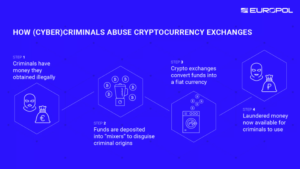The year 2022 recorded the cybersecurity exploit.

Globally, there is one sector that was not affected by economic uncertainty and the slowdown in investment by small and medium-sized enterprises in 2022. On the contrary: it has grown considerably and, in fact, has had its consecration. We are talking about cybersecurity. According to a report by research firm Canalys, the global cybersecurity market grew by 15.9 percent to USD 17.8 billion in the last quarter of the year just ended.
At the top of the list of the industry’s most successful companies in 2022 are California-based Palo Alto Networks, Cisco, and Fortinet. Palo Alto Networks, headquartered in Santa Clara, was the number one vendor in the quarter, growing 24.9 percent and increasing its market share to 8.4 percent from 7.8 percent in Q3 2021. Cisco, which has its headquarters in San Jose, was the second largest IT security player, with 16.7 percent growth and a stable market share of 6.9 percent. Fortinet, which has its headquarters in Sunnyvale, placed third, achieving 29.9 percent growth for a 6.7 percent market share, up from 6 percent a year ago.

Endpoint security (the physical devices that connect and exchange information with a computer network) was the fastest-growing category, up 18.7 percent year-on-year to $2.7 billion. Network security, on the other hand, was the largest category, with a value of $5.1 billion and 14.8 percent growth. “Many cybersecurity vendors have moved to subscription-based business models, which has helped them protect themselves from the immediate impact of the economic slowdown,” explained Matthew Ball, chief analyst at Canalys. “The shift to subscription-based platforms and the increased focus on upselling existing accounts will support revenue growth for cybersecurity vendors over the next 12 months.”
For 2023, the forecast does not look promising. Cybersecurity experts agree that there will be a general increase in cyber attacks around the world, with the geopolitical turmoil linked to the conflict in Ukraine and the financial and energy crisis, with hackers likely to target governments, companies and critical infrastructure. Data from 2022, however, show that possible targets are gearing up to prevent and ward off digital offensives. The European Union, for example, has adopted an updated cybersecurity directive, the NIS 2. Italy, along with the other EU countries (as well as the United States, Japan, India, Australia, and the United Kingdom) has also joined the International counter-ransomware initiative, participating in the work of the last international summit last November in Washington. The aim of the various partners is to develop common responses to ransomware attacks through joint measures, information sharing and new platforms for countering network incursions.







